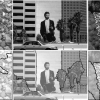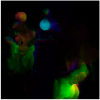ICCV
2009
IEEE
16 years 5 months ago
2009
IEEE
Given an arbitrary image, our goal is to segment all distinct
texture subimages. This is done by discovering distinct,
cohesive groups of spatially repeating patterns, called tex...
77
Voted
ICCV
2009
IEEE
16 years 5 months ago
2009
IEEE
In this paper, we introduce a new approach for modeling
visual context. For this purpose, we consider the leaves of a
hierarchical segmentation tree as elementary units. Each
le...
128
Voted
ICCV
2009
IEEE
16 years 5 months ago
2009
IEEE
We present an algorithm for detecting human actions
based upon a single given video example of such actions.
The proposed method is unsupervised, does not require
learning, segm...
102
Voted
ICCV
2009
IEEE
16 years 5 months ago
2009
IEEE
We propose an algorithm for large displacement opti-
cal flow estimation which does not require the commonly
used coarse-to-fine warping strategy. It is based on a
quadratic rel...
100
click to vote
ICCV
2009
IEEE
16 years 5 months ago
2009
IEEE
The intrinsic image decomposition aims to retrieve “intrinsic”
properties of an image, such as shading and reflectance.
To make it possible to quantitatively compare
differe...
111
Voted
ICCV
2009
IEEE
16 years 5 months ago
2009
IEEE
Subspace segmentation is the task of segmenting data
lying on multiple linear subspaces. Its applications in
computer vision include motion segmentation in video,
structure-from...
153
Voted
ICCV
2009
IEEE
16 years 5 months ago
2009
IEEE
We present a novel multi-view stereo method designed
for image-based rendering that generates piecewise planar
depth maps from an unordered collection of photographs.
First a di...
86
Voted
ICCV
2009
IEEE
16 years 5 months ago
2009
IEEE
In this paper we pursue the task of aligning an ensemble
of images in an unsupervised manner. This task has
been commonly referred to as “congealing” in literature.
A form o...
110
click to vote
ICCV
2009
IEEE
16 years 5 months ago
2009
IEEE
Multilinear algebra is a powerful theoretical tool for visual
geometry, but widespread usage of traditional typographical
notation often hides its conceptual elegance and
simpli...
91
Voted
ICCV
2009
IEEE
16 years 5 months ago
2009
IEEE
We present a wide-baseline image matching approach
based on line segments. Line segments are clustered into
local groups according to spatial proximity. Each group is
treated as...


